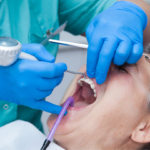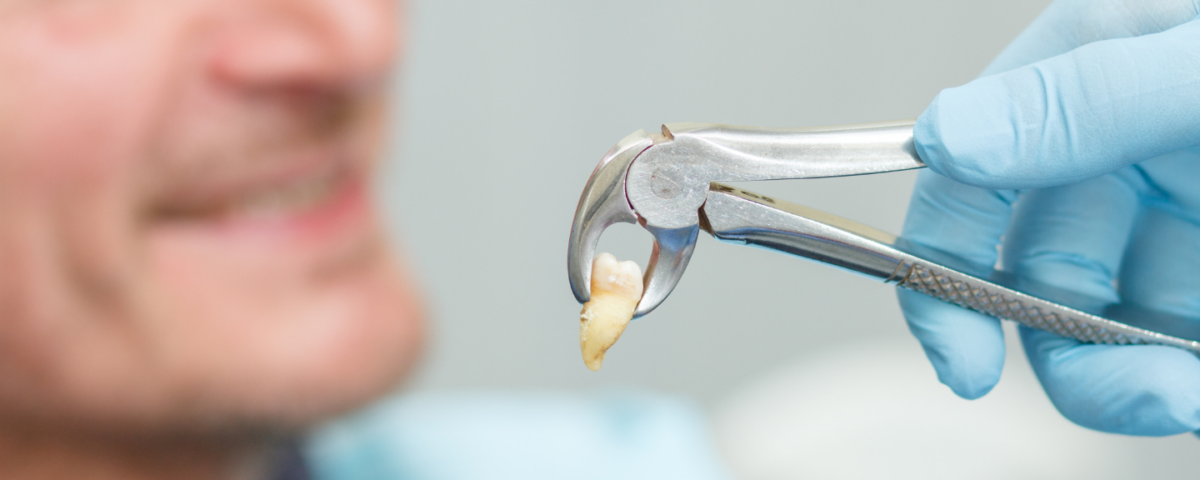
How to Treat Gingivitis
November 21, 2023
Orthodontist vs. Dentist: What is the difference
December 27, 2023Taking care of yourself after tooth extraction can help you to feel better sooner. If you have an extraction planned, prepare yourself now to make a recovery as easy as possible. Find out what foods you can eat and stock up on them to avoid needing to make trips to the grocery store during your recovery period.
Things to Have on Hand for Tooth Extraction Recovery
Once you’ve scheduled your tooth extraction, start your preparations for the recovery period. Gather the following right before your extraction to make recovery smoother:
- Prescription pain medications and antibiotics your dentist recommends that you take after the extraction
- Ibuprofen and acetaminophen if you don’t get a pain medication prescription
- Sterile gauze pads for the wound site
- Ice packs and towels to wrap around them to reduce swelling
- Chargers for your tablet or phone to keep your devices powered near your rest area
- Easy-to-eat foods
- A note excusing you from work for your dentist if required by your job
- Antimicrobial mouthwash to gently rinse the area starting the day after the extraction
Talk to your dentist about any personalized recommendations they have. For example, if you have a physically demanding job, you may need to take extra time off to let your mouth heal.
What Can I Eat After Tooth Extraction?
Following tooth extraction, you may not feel like eating much, but fueling your body can help you to feel better and speed up recovery. Make sure to drink plenty of liquids with any food that you eat after the extraction to stay hydrated.

For the first two to three days after tooth extraction, you should have soft foods that you don’t need to chew and won’t dislodge the blood clot over the extraction site. The following are some soft, palatable foods that are easy to eat and prepare for the first days after the procedure. As with all food recommendations, clear anything with your doctor first if you must follow a medically prescribed eating plan.
1. Yogurt
Plain yogurt is a healthy option to eat after tooth extraction that contains naturally high levels of protein. You can enjoy regular or Greek yogurt made from cow’s milk or yogurt alternatives made from plant milk.
When choosing yogurt for your recovery, avoid the type that contains pieces of fruit in it for the first couple of days after your extraction. The fruit pieces can get stuck in the extraction site. Choose blended yogurts or plain yogurt topped with honey, applesauce, or syrup.
One of the perks of yogurt is its cool temperature and creamy texture, which can soothe pain inside your mouth.
2. Blended Soups
You can have soup after your extraction, but you cannot simply heat a can of chicken noodle soup and eat it piping hot. First, if you choose a soup with meat, rice, noodles, or vegetables in it, blend the soup before heating it.
Don’t eat the soup piping hot. You should let it cool down to room temperature. Alternatively, refrigerate the soup and eat it cold to prevent irritating the inside of your mouth.
If you don’t want to eat lukewarm soup, consider soups designed for eating while cold, such as gazpacho, vichyssoise, or a cold fruit soup. These fruit and veggie-packed options will give you a boost of nutrients to help your healing.
3. Applesauce and Other Pureed Fruits
With pureed fruits, you can add color to your post-extraction soft food diet. Applesauce is one of the easiest pureed fruits to find at grocery stores, and you don’t need to do any preparation to enjoy it.
Another pureed fruit you can try is pumpkin puree. Don’t confuse the pure pumpkin puree with pumpkin pie mix in a can, which includes spices and sugar. The spices could irritate your mouth, depending on your level of discomfort. Pumpkin puree contains only pumpkin, and you can enjoy it as you would applesauce. Or top it with maple syrup for a sweet treat.
Avocados are another soft fruit that you can enjoy without preparation. Get a very soft, ripe avocado, cut it in half, remove the pit, and enjoy the fruit with a spoon.
One more fruit you can enjoy is frozen, mashed bananas. Some people like the texture and flavor of banana ice cream. Simply freeze bananas in their peels, peel, and mash or blend to create a creamy dessert.
4. Mashed Potatoes
The fastest way to enjoy mashed potatoes and avoid chewy chunks of food on the day of your extraction is to mix a small packet of instant potatoes per package directions. These mixtures contain dried potato flakes that you mix with milk and butter to create mashed potatoes. Though these potatoes don’t taste like homemade, they offer a comforting, savory food to eat while you recover.
Mashed sweet potatoes with butter or butter and brown sugar is another way to eat a soft food. Make sure after baking and mashing the potato that you cool it down to room temperature to avoid irritating the inside of your mouth from the heat.
What Should I Avoid Eating After Tooth Extraction?
The following are some foods you must avoid eating after your extraction to reduce irritation and protect the extraction site:
- Spicy foods
- Acidic foods
- Crunchy foods
- Crumbly foods that could get into the extraction site
- Chewy foods
- Anything that requires a straw to drink because sucking through a straw can dislodge the blood clot
- Alcohol
- Carbonated drinks
- Smoking
Talk to your dentist if you have questions about what you can and cannot eat after recovery.
How Long Does Extraction Recovery Take?
The extraction recovery process requires several days. On the day of the extraction, stick to liquids or soft foods only.
Use an ice pack wrapped in a towel on your cheek to reduce swelling for the first 48 hours.
Stay away from crunchy, chewy, or crumbly foods that could get into your extraction site for the first week after your extraction.
Return to regular brushing and flossing of the surrounding teeth 24 hours after the extraction, and ask your dentist about how to rinse the extraction site to keep it clean. Wait until 72 hours after your extraction before you start rinsing.
As with all dental procedures, talk to your dentist if you have any questions about the recovery process or if you start to show signs of an infection, such as fever or severe swelling.
Contact Langley Dental Care for Tooth Extraction and Other Dental Services in Charlotte
When you need dental treatment and services, including extractions and cleanings, contact Langley Dental Care. We care for the oral health of your entire family and can help you with a myriad of dental concerns. Let us become your Charlotte-area partner in having a lifelong, healthy smile. Proud to serve Belmont, Lake Wylie, SC, and Clover, SC, as a Top Dentist for over 14 years.



